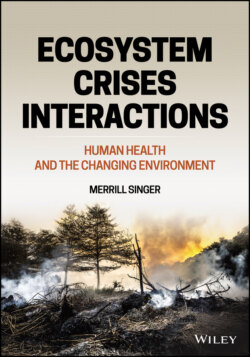Читать книгу Ecosystem Crises Interactions - Merrill Singer - Страница 41
2.3.2.3 The Convention on Biological Diversity
ОглавлениеThis discussion draws attention to the incredible diversity of life in modern ecology. Biodiversity is formally defined in the Convention on Biological Diversity as “the variability among living organisms from all sources including, inter alia, terrestrial, marine and other aquatic ecosystems and the ecological complexities of which they are part; this includes diversity within species, between species and of ecosystems” (Reid et al. 1993). The Convention is a treaty signed by 168 government leaders at the United Nations Conference on Environment and Development on June 5, 1992, a historic meeting known as the Rio Earth Summit. It asserts that biological diversity is about more than plants, animals, fungi, and microorganisms, the variability within and across species, the communities organisms form, and habitats and ecosystems. Additionally, and importantly, it is about the human need for food, water, clean air, medicines, shelter, and a healthy environment (Table 2.1). According to the Convention, “[b]iodiversity provides a large number of goods and services that sustain our lives” (Convention on Biological Diversity 2018).
Inherently, biodiversity is multidimensional, encompassing many aspects of the variability of life on Earth, including the taxonomic classification of species, impacts of species on one another and on the abiotic environment, the evolutionary relatedness of species, the genetic make‐up of organisms, and landscape characteristics.
Table 2.1 Diverse benefits from nature.
Source: Modified from World Wildlife Fund, Living Planet Report 2018. Retrieved from: https://www.worldwildlife.org/pages/living‐planet‐report‐2018.
| Cultural resourcesEmotional and physical healthRecreationEsthetic valuesSpiritual values |
| ProvisionsFoodWaterMedicinal resourcesOxygenMaterial resources |
| ProcessesNutrient cyclingPhotosynthesisSoil formation |
| RegulationsAir qualityClimate and extreme eventsWaterErosionPollination |
Despite their importance to ecological health, there remain significant gaps in available biodiversity data. The kinds of knowledge that are limited include the time depth of information about particular habitats, the actual composition of species in an ecosystem, the number of individuals within local populations of organisms, and changes in the areal range in which species are found.
